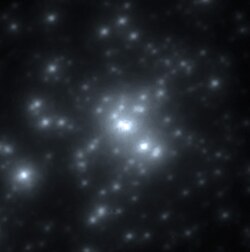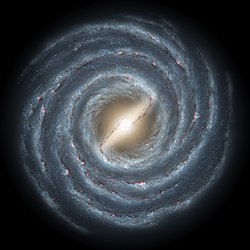NGC 2014, NGC 2020 - HST - Heic2007a
| ESA/Hubble images, videos and web texts are released by the ESA under the Creative Commons Attribution 4.0 International license and may on a non-exclusive basis be reproduced without fee provided they are clearly and visibly credited. Detailed conditions are below; see the ESA copyright statement for full information. For images created by NASA or on the hubblesite.org website, or for ESA/Hubble images on the esahubble.org site before 2009, use the {{PD-Hubble}} tag.
Conditions:
Notes:
|
- Dieses Werk darf von dir
- verbreitet werden – vervielfältigt, verbreitet und öffentlich zugänglich gemacht werden
- neu zusammengestellt werden – abgewandelt und bearbeitet werden
- Zu den folgenden Bedingungen:
- Namensnennung – Du musst angemessene Urheber- und Rechteangaben machen, einen Link zur Lizenz beifügen und angeben, ob Änderungen vorgenommen wurden. Diese Angaben dürfen in jeder angemessenen Art und Weise gemacht werden, allerdings nicht so, dass der Eindruck entsteht, der Lizenzgeber unterstütze gerade dich oder deine Nutzung besonders.
Relevante Bilder
Relevante Artikel
NGC 2014NGC 2014 ist ein Emissionsnebel in der Großen Magellanschen Wolke mit einem eingebetteten offenen Sternhaufen. Er liegt im Sternbild Schwertfisch. Das Objekt wurde am 3. August 1826 von James Dunlop mit einem 23-cm-Teleskop entdeckt. .. weiterlesen
NGC 2020NGC 2020 ist ein HII-Gebiet im Sternbild Schwertfisch, in dessen Innerem sich ein Wolf-Rayet-Ringnebel um den Wolf-Rayet-Stern Brey 48 gebildet hat. Er liegt in einer Entfernung von 160.000 Lichtjahren und gehört zur Großen Magellanschen Wolke. Der Farbunterschied zwischen NGC 2020 und NGC 2014 ist auf die Anwesenheit von Brey 48 zurückzuführen. Dessen hohe Effektivtemperatur sorgt für eine hohe Intensität der zweifach ionisierten Sauerstofflinie bei 500,7 nm, die im Bild blau dargestellt ist. Das Leuchten des HII-Gebiets NGC 2014 wird dagegen von der, in rot eingefärbten, Rekombinationslinie des angeregten Wasserstoffs bei 656,3 nm (Hα) dominiert. .. weiterlesen
Große Magellansche WolkeDie Große Magellansche Wolke, abgekürzt GMW oder LMC, ist eine Satellitengalaxie der Milchstraße (Galaxis). Sie befindet sich in einer Entfernung von rund 163.000 Lichtjahren zum Sonnensystem. Sie ist das viertgrößte Mitglied der Lokalen Gruppe, nur übertroffen von Milchstraße, Andromeda- und Dreiecksgalaxie. Mit ihren rund 15 Milliarden Sternen kommt sie auf etwa 5 % der Anzahl der Sterne der Milchstraße und dreimal so viele Sterne wie die ihr in vielerlei Hinsicht ähnliche Kleine Magellansche Wolke. Große und Kleine Magellansche Wolke werden zusammenfassend als Magellansche Wolken bezeichnet. .. weiterlesen










